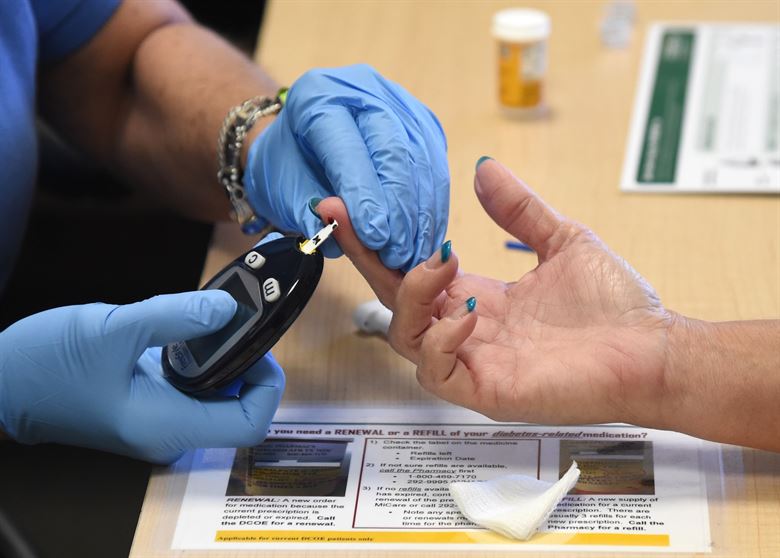Diabetes
After digestion, glucose passes into the bloodstream, where it is used by cells for growth and energy. For glucose to get into cells, insulin must be present. Insulin is a hormone produced by the pancreas, a large gland behind the stomach.
When people eat, the pancreas automatically produces the right amount of insulin to move glucose from blood into the cells. In people with diabetes, however, the pancreas either produces little or no insulin, or the cells do not respond appropriately to the insulin that is produced. Glucose builds up in the blood, overflows into the urine, and passes out of the body in the urine. Thus, the body loses its main source of fuel even though the blood contains large amounts of glucose.
The Three main types of diabetes are Type 1 diabetes (juvenile), Type 2 diabetes (most common) and Gestational diabetes.
Type 1 – Type 1 diabetes is an autoimmune disease. An autoimmune disease results when the body’s system for fighting infection—the immune system—turns against a part of the body. In diabetes, the immune system attacks and destroys the insulin-producing beta cells in the pancreas. The pancreas then produces little or no insulin. A person who has type 1 diabetes must take insulin daily to live.
Type 2 – The most common form of diabetes is type 2 diabetes. About 90 to 95 percent of people with diabetes have type 2. This form of diabetes is most often associated with older age, obesity, family history of diabetes, previous history of gestational diabetes, physical inactivity, and certain ethnicities. About 80 percent of people with type 2 diabetes are overweight. Type 2 diabetes is increasingly being diagnosed in children and adolescents, especially among African American, Mexican American, and Pacific Islander youth.
Gestational – Some women develop gestational diabetes late in pregnancy. Although this form of diabetes usually disappears after the birth of the baby, women who have had gestational diabetes have a 40 to 60 percent chance of developing type 2 diabetes within 5 to 10 years. Maintaining a reasonable body weight and being physically active may help prevent development of type 2 diabetes. About 3 to 8 percent of pregnant women in the United States develop gestational diabetes. As with type 2 diabetes, gestational diabetes occurs more often in some ethnic groups and among women with a family history of diabetes. Gestational diabetes is caused by the hormones of pregnancy or a shortage of insulin. Women with gestational diabetes may not experience any symptoms.
You can also find information for Diabetes Self Management Education by visiting The Health for Life Diabetes Initiative

